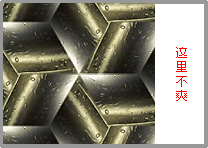 Web Front-end
Web Front-end
 JS Tutorial
JS Tutorial
 Images based on jQuery are not automatically reduced in proportion_javascript skills
Images based on jQuery are not automatically reduced in proportion_javascript skills
Images based on jQuery are not automatically reduced in proportion_javascript skills
For example
First case: For example, the image size is 600×350 and the display area size is 200×140. If the image is scaled according to the target width (200) and the size becomes 116, then it will be very difficult to display at 200×140. Ugly. As shown below on the left
Second case: Just the opposite. If the picture size is 400×400, the display area is also 200×140. If the picture is scaled according to the target height (140), the size becomes 140, that is, 140×140, the same Ugly. As shown below on the right


At this time, it is slightly better to use jQuery to get the image size and then judge and process it: in the first case, the width is calculated as 140×600/350=240 based on the height, and then the image is displayed as 240×140, and the excess part is used with css overflow:hidden Hide.
The following is my processing method: (Note - what is mentioned here is when the width and height of the original image are larger than the size of the target display box - so it is called reduction)
Demo 》Here
Html part
If the class of the display area is thumbnail
css part
.thumbnail{overflow:hidden;width:200px;height:140px;}
jQuery part
1. Of course, you need to install the jQuery library first. How to install Google and Baidu yourself?
2. Core code
jQuery(document).ready(function(){
/* 图片不完全按比例自动缩小 by zwwooooo */
$(window).load(function(){
$('#content div.thumbnail img').each(function(){
var x = 200; //填入目标图片宽度
var y = 140; //填入目标图片高度
var w=$(this).width(), h=$(this).height();//获取图片宽度、高度
if (w > x) { //图片宽度大于目标宽度时
var w_original=w, h_original=h;
h = h * (x / w); //根据目标宽度按比例算出高度
w = x; //宽度等于预定宽度
if (h < y) { //如果按比例缩小后的高度小于预定高度时
w = w_original * (y / h_original); //按目标高度重新计算宽度
h = y; //高度等于预定高度
}
}
$(this).attr({width:w,height:h});
});
});
});Applicable places: Fixed size image display area, such as thumbnails.
Finished.
The following is a recommended image size control code commonly used in content pages:
<script type="text/javascript">
$(window).load(function() {
$(".cont img").each( function() {
var maxwidth = 800;
if ($(this).width() > maxwidth) {
$(this).width(maxwidth);
}
});
});
</script>There is no need to explain the code. There are two things worth noting:
First: $(window).load(function() {
Use $(window).load to declare the event, but cannot use $(document).ready.
I saw related articles on Baidu and iteye websites, and the methods are all wrong. Doesn't work at all.
Second: $(".cont img").each( function()
Here is .each( function() { .... }), where each calls the following methods one by one on the specified image collection object.
This method is compatible with most browsers and the effect is very convenient.
Personally, I feel that this method is more convenient. In addition, it can be expanded to a thumbnail control method.

Hot AI Tools

Undresser.AI Undress
AI-powered app for creating realistic nude photos

AI Clothes Remover
Online AI tool for removing clothes from photos.

Undress AI Tool
Undress images for free

Clothoff.io
AI clothes remover

AI Hentai Generator
Generate AI Hentai for free.

Hot Article

Hot Tools

Notepad++7.3.1
Easy-to-use and free code editor

SublimeText3 Chinese version
Chinese version, very easy to use

Zend Studio 13.0.1
Powerful PHP integrated development environment

Dreamweaver CS6
Visual web development tools

SublimeText3 Mac version
God-level code editing software (SublimeText3)

Hot Topics
 Replace String Characters in JavaScript
Mar 11, 2025 am 12:07 AM
Replace String Characters in JavaScript
Mar 11, 2025 am 12:07 AM
Detailed explanation of JavaScript string replacement method and FAQ This article will explore two ways to replace string characters in JavaScript: internal JavaScript code and internal HTML for web pages. Replace string inside JavaScript code The most direct way is to use the replace() method: str = str.replace("find","replace"); This method replaces only the first match. To replace all matches, use a regular expression and add the global flag g: str = str.replace(/fi
 Build Your Own AJAX Web Applications
Mar 09, 2025 am 12:11 AM
Build Your Own AJAX Web Applications
Mar 09, 2025 am 12:11 AM
So here you are, ready to learn all about this thing called AJAX. But, what exactly is it? The term AJAX refers to a loose grouping of technologies that are used to create dynamic, interactive web content. The term AJAX, originally coined by Jesse J
 10 jQuery Fun and Games Plugins
Mar 08, 2025 am 12:42 AM
10 jQuery Fun and Games Plugins
Mar 08, 2025 am 12:42 AM
10 fun jQuery game plugins to make your website more attractive and enhance user stickiness! While Flash is still the best software for developing casual web games, jQuery can also create surprising effects, and while not comparable to pure action Flash games, in some cases you can also have unexpected fun in your browser. jQuery tic toe game The "Hello world" of game programming now has a jQuery version. Source code jQuery Crazy Word Composition Game This is a fill-in-the-blank game, and it can produce some weird results due to not knowing the context of the word. Source code jQuery mine sweeping game
 How do I create and publish my own JavaScript libraries?
Mar 18, 2025 pm 03:12 PM
How do I create and publish my own JavaScript libraries?
Mar 18, 2025 pm 03:12 PM
Article discusses creating, publishing, and maintaining JavaScript libraries, focusing on planning, development, testing, documentation, and promotion strategies.
 jQuery Parallax Tutorial - Animated Header Background
Mar 08, 2025 am 12:39 AM
jQuery Parallax Tutorial - Animated Header Background
Mar 08, 2025 am 12:39 AM
This tutorial demonstrates how to create a captivating parallax background effect using jQuery. We'll build a header banner with layered images that create a stunning visual depth. The updated plugin works with jQuery 1.6.4 and later. Download the
 Auto Refresh Div Content Using jQuery and AJAX
Mar 08, 2025 am 12:58 AM
Auto Refresh Div Content Using jQuery and AJAX
Mar 08, 2025 am 12:58 AM
This article demonstrates how to automatically refresh a div's content every 5 seconds using jQuery and AJAX. The example fetches and displays the latest blog posts from an RSS feed, along with the last refresh timestamp. A loading image is optiona
 Getting Started With Matter.js: Introduction
Mar 08, 2025 am 12:53 AM
Getting Started With Matter.js: Introduction
Mar 08, 2025 am 12:53 AM
Matter.js is a 2D rigid body physics engine written in JavaScript. This library can help you easily simulate 2D physics in your browser. It provides many features, such as the ability to create rigid bodies and assign physical properties such as mass, area, or density. You can also simulate different types of collisions and forces, such as gravity friction. Matter.js supports all mainstream browsers. Additionally, it is suitable for mobile devices as it detects touches and is responsive. All of these features make it worth your time to learn how to use the engine, as this makes it easy to create a physics-based 2D game or simulation. In this tutorial, I will cover the basics of this library, including its installation and usage, and provide a
 How do I optimize JavaScript code for performance in the browser?
Mar 18, 2025 pm 03:14 PM
How do I optimize JavaScript code for performance in the browser?
Mar 18, 2025 pm 03:14 PM
The article discusses strategies for optimizing JavaScript performance in browsers, focusing on reducing execution time and minimizing impact on page load speed.





